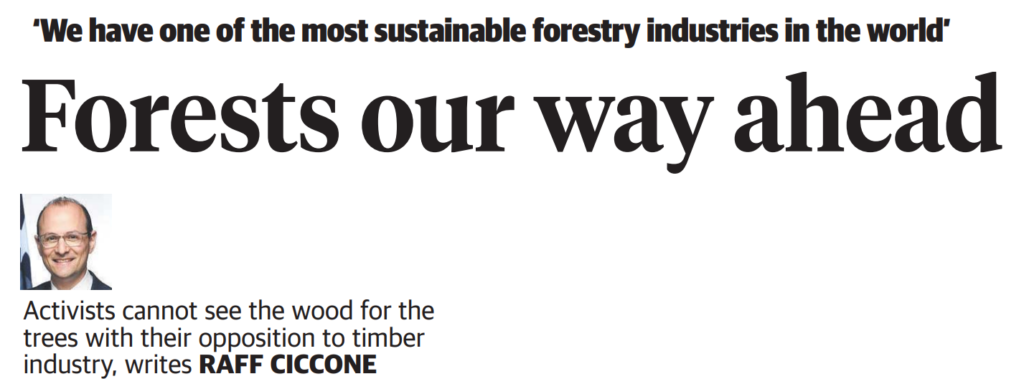Originally published in The Weekly Times,14 December 2022

ONE of the most significant outcomes from the recent 27th United Nations Climate Change Conference, COP27, is that Australia has become a founding member of the Forests and Climate Leaders Partnership, a new international group that has been tasked with accelerating the contribution of forests to global climate action.
UN research suggests that 33 million hectares of new plantations are needed to meet future demand and our climate goals. Our delegation highlighted how Australia can actually lead the way by achieving our 2030 goal of one billion new production trees.
I’ve spoken many times in the Senate about the significant contribution made by our sustainable forestry industry to achieving our emissions reduction targets.
We know trees absorb carbon, so using timber products stores that carbon, and then new trees are planted to replace the timber that is used for those products. It’s great to see the role forestry plays in climate action being recognised and encouraged on the world stage.
New research urges nations to grow their sustainable forestry industries, thereby addressing an emerging global timber and wood supply gap as the world pivots to climate-friendly fibre supplies.
Demand for timber products is increasing, and, if we do not support sustainable forestry, this demand will either be met by unsustainably sourced timber or by other products that do not have the same climate benefits and may even contribute to higher emissions.
This is one of the great frustrations that I have with environmentalists.
They do everything they can to disrupt the forestry industry in my home state of Victoria.
We have one of the most sustainable forestry industries in the world, with very strict regulations, but nothing is ever enough for these activists, most of whom live in the inner city and have never spoken to a timber worker in their life.
But they are hell-bent on destroying the livelihoods of thousands of workers and affecting dozens of regional communities.
What actually happens when these people succeed in their goal of disrupting Australia’s sustainable industry forests?
Demand for timber products doesn’t decrease.
Instead buyers and consumers have to source these products from forests overseas that are not sustainably managed. I’ve never heard one of the activists explain how this is good for the environment or lowers our emissions.
But it is great to see that world leaders know better. They are recognising the need to expand the production of sustainable forest products.
This is an excerpt taken from a speech I gave to the Australian Senate.

